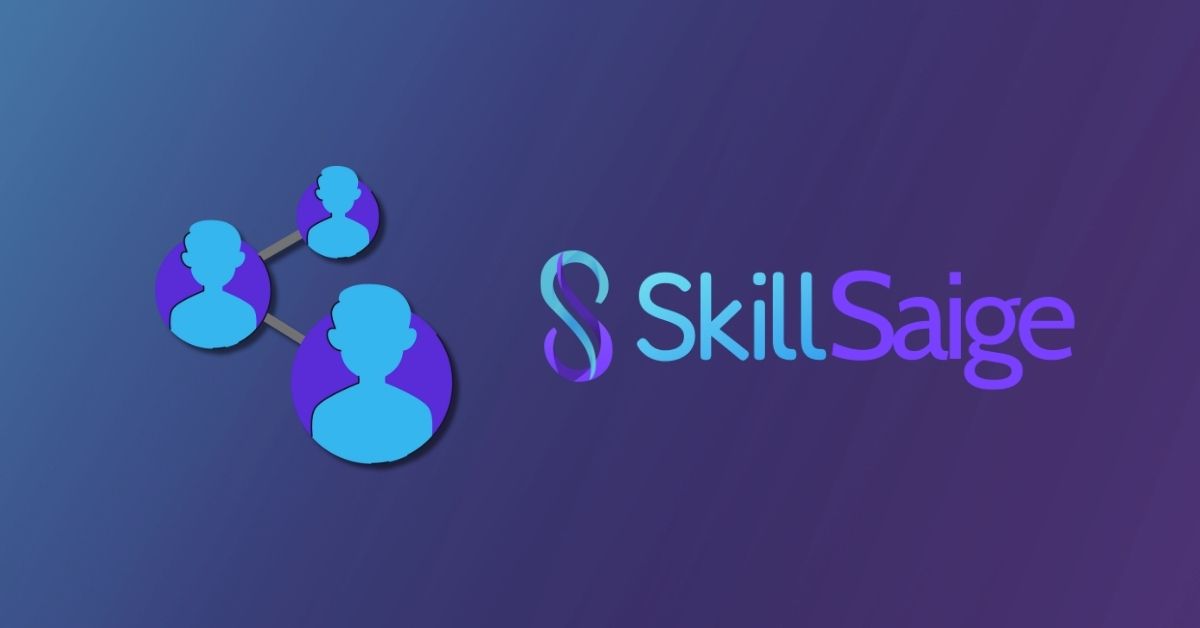Mapping Out Your Business Network: A Strategic Approach to Your Job Search
15 Sep 2025 – SkillSaige Team
Job hunting? One of the most effective ways to jumpstart your job search is by creating a list, or mapping out, of every person in your employment network. Your network includes more than just former colleagues; it comprises friends, family, alumni, mentors, industry peers, and even loose connections who might offer valuable leads or introductions.
A well-organized network can be the difference between landing an interview and getting lost in a sea of online applications. 85% of jobs are filled through networking, making it a critical tool for career advancement. Below, we’ll break down how to strategically map your network, identify gaps, and leverage both in-person and virtual connections to maximize opportunities.
Need to level up your soft skills? Practice mock interviews and much more for free with SkillSaige.
Step 1 Build Your Business Relationship List
1. Start with Close Contacts
Begin by listing everyone you know personally and professionally—past coworkers, classmates, mentors, and even casual acquaintances. Many job seekers underestimate weak ties (like a former intern or a LinkedIn connection), but research shows that even weaker ** ** connections can generate unexpected job leads .
Action Tip: Use LinkedIn’s “Connections” tab to export your network and categorize them.
Don’t Overlook: Friends of friends, alumni from your university, or people you’ve met at conferences.
2. Categorize Your Connections
Group your contacts based on:
-
Industry (e.g., tech, finance, healthcare)
- Company (especially those at your target employers)
- Relationship Strength (strong ties vs. acquaintances vs. potential referrals)
This helps you prioritize outreach—strong ties may advocate for you, while weak ties can introduce you to new circles.
Step 2. Identify Gap & Opportunities
- Look for missing links:
-
Are there industries where you lack connections? Join relevant LinkedIn groups, alumni associations, local business networking events, or professional organizations.
-
Do you have contacts at target companies? If not, seek introductions through mutual connections. Sometimes companies offer a referral bonus for successful hires.
Pro Tip: Ask current relationships: ‘Who else would you recommend I talk to?’ This strategy can reveal valuable hidden opportunities within your broader network.
2. Find the “Connectors”
Some people naturally know more professionals—these are your super-connectors and can super-charge your sphere of influence. Prioritize building relationships with them, as they can exponentially expand your reach.
Step 3: Leverage Your Virtual Network
LinkedIn is a goldmine for strategic networking:
-
Use LinkedIn’s “Alumni Tool” to find graduates from your school working at companies you’re targeting.
- Engage with Content—commenting on posts and sharing insightful LinkedIn Articles can increase visibility, and it can lead to direct messages from job recruiters or hiring managers.
- Send Personalized Connection Requests with a note like: “Hi [Name], I noticed your work at [Company]—I’d love to learn more about your experience. Would you be open to a quick chat?”
According to LinkedIn’s advice:
“Virtual networking removes geographical barriers, letting you tap into global opportunities.”
Step 4: Prioritize & Execute Outreach
Not all connections are equal—rank them based on:
1. Relevance (Do they work in your desired field?)
2. Influence (Can they refer you or introduce you to hiring managers?)
3. Willingness to Help (Have they been responsive in the past?)
Outreach Strategy:
- Strong Ties: Ask for referrals directly.
- Weak Ties: Request informational interviews to build rapport.
- New Connections: Engage first (like/comment on their posts) before asking for help.
- Have a polished [elevator pitch] ready
- Show Appreciation: Be sure to send a follow up email after meeting someone or doing something nice for you.
Example Email Template:
“Hi [Name], I’m exploring opportunities in [Industry] and admire your work at [Company]. Would you have 15 minutes to share your insights?”
Turn Connections into Opportunities
A well-mapped network is more than a contact list—it’s a strategic job search tool for job seekers. By organizing your connections, filling gaps, and leveraging both in-person and virtual networking, you’ll uncover hidden job opportunities and gain insider referrals.
Final Tip: Networking is about giving, not just taking. Offer help (e.g., sharing job leads, providing industry insights) to strengthen relationships long-term.
Need Interview Practice? Perfect your delivery with real-time feedback—practice mock interviews and other soft skills for free with SkillSaige.
Related Posts
SkillSaige Unveils Major Update
SkillSaige Unveils Major Update: Smarter Home Experience, Daily Rewards, and a More Engaging Platform
17 Nov 2025
The Unwritten Rules of Professionalism: How to Navigate Company Culture Without Losing Your Mind
Landing your first job (or even your fifth) isn’t just about hard skills and experience. It’s about mastering the unspoken rules of professionalism and office etiquette. And let’s be honest: no one hands you a manual titled “How to Not Accidentally Annoy Your Boss While Still Being Yourself.”
30 Sep 2025
How to Showcase Achievements in Your Cover Letter (Using the STAR Method)
Most job seekers’ cover letters for resumes miss the mark, but yours won’t. If you’ve ever wondered how to write a cover letter that actually gets read, you’re not alone. The secret? Speak directly to hiring managers and job recruiters by blending professionalism with personality. This guide cuts through the noise with actionable strategies to make your application impossible to ignore.
25 Sep 2025
